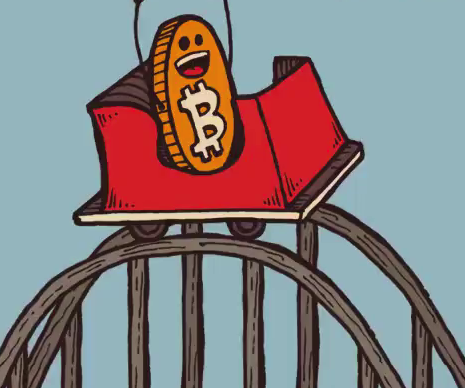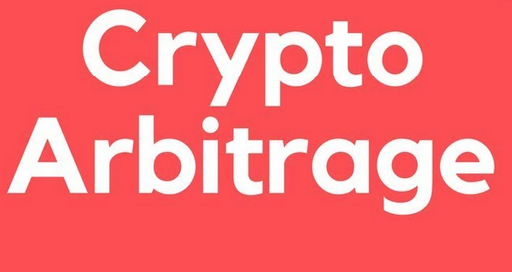Since Bitcoin’s creation in 2009, more and more people are getting to know how this young digital asset works. However, while it gains its popularity over the past years, only a small portion of folks actually hold a significant amount of Bitcoin or maybe other cryptocurrencies as well.
Engaging into something new requires you to gain significant knowledge on what you’re getting into, especially if you plan to buy bitcoin. Entering the world of cryptocurrency can be something huge or even intimidating for others, most especially if you will be spending your time doing not only purchases or savings, but also investments.
One of the distinct characteristics of Bitcoin is its volatility. For us to have a further understanding of what this quality means, let us first know what volatility is. Volatility, as per Investopedia, is “a statistical measure of the dispersion of returns for a given security or market index.”
It is the “range of price change a security experiences over a given period of time.” For example, a price that remains the same or stable has low volatility, while a price that goes up and down irregularly has a high volatility—it experiences dramatic falls and rapid gains.
Bitcoin is not only known because of its distinct characteristic of having peer-to-peer exchanges or having the option to turn bitcoin into cash. Bitcoin is also known for its volatile characteristic—being correlated to gold. Campbell Harvey, a finance professor at Duke University published his analysis about the topic, in The Wall Street Journal.
He stated that “Bitcoins have been 7.5 times as volatile as gold, and more than eight times as volatile as the S&P (Standard and Poor) 500 over the last three years.” This analysis, according to an article corresponds with the analysis done by an associate professor from Universiteé Paris Dauphine in France named Marie Brière.
She has calculated an annualized return of a percentage rate of 370 for Bitcoins with a volatility percentage of 175. As per the report, these kinds of severe price movements that occurred within a short span are no longer at par with an ideal exchange medium either for buyers or sellers. This may cause Bitcoins to be limited in being a valuable means in business.
With all these discussions about Bitcoins volatility, one might get confused whether or not it is a bad scenario. To have further understanding on this matter, let us learn its pros and cons.
Potentials of Bitcoin’s Volatility
In trading, Bitcoin’s volatility is considered a good thing. Some even use the terms “buy low, sell high” to explain it. This is said to provide an interesting trading opportunity for those folks who are risk-takers.
With the presence of volatility in Bitcoins, more and more business people, investors, and traders are inclined to enter the market. Having new parties joining the market will bring more chances of either good or bad transactions. Some good traders will bring profit, which in turn may create a more stable price. On the other hand, bad traders might say goodbye to their investments for good and eventually befall from the market.
Some traders also do the buy-and-hold strategy where they buy a stock and hold them for a specific period of time. It can go from months to a year, or even many years. They use this long-term plan for them to collect their group’s or company’s cumulative growth.
The buy-and-hold approach suggests that the fluctuation or change in the market creates returns over a period of time. On the other hand, for short-term traders and investors, volatility is an opportunity for making profits through having a correct guess or prediction on Bitcoin’s short-term trends.
Drawback of Bitcoin’s Volatility
For those who are not into the buy-and-hold approach, volatility is dubbed to be more crucial. Short-term traders are dealing with changes that happen very rapidly. It’s the exact opposite of holding it for a lengthy period of time; short-term traders are working with second-to-second or minute-to-minute changes.
Another thing will be for those who will choose to work with quite longer span like days or weeks. While they might also hit the correct prediction on Bitcoin’s trends, these entire process is undeniably a tiring process.
This fluctuating price of Bitcoin also affects the investors’ or traders’ decision making. As Bitcoin’s price hits up the ceiling, there’s a sudden feeling of being thrilled, excited, and optimistic, especially for those who are holding the coin. However, for those who are not, regrets might knock in their heads.
With the FOMO or Fear of Missing Out, some might buy lots of Bitcoins after the sudden price increase. But then, when Bitcoin’s price goes down, those who are holding the coin will enter the emotional thoughts of having anxiety, panic, and also regrets of not selling them immediately.
Bitcoin’s volatility reaps a lot of news regarding its disadvantages. To add, one of the popular reasons is having a limited number of coins. This factor makes a huge demand for Bitcoin’s price to go extremely high or low.
If you are looking into doing an investment with cryptocurrencies, note that this involves a very high level of risk. Another factor that some are looking into is its unregulated characteristic. One article even stated that “since these cryptocurrency prices are not regulated, as more people enter the market lured by the high prices, the prices climb even higher.” It even furthered that this might probably lead to creation of a bubble that in time will burst and cause boundless losses in effect.
Thinking of jumping into holding a bitcoin or not? The answer will vary with the person. While Bitcoin’s volatility reaps different opinions on whether it is a bad thing or not, one cannot deny that as Bitcoin gains its own spotlight, more individuals and even huge companies are getting engaged and involved in the business. This reality suggests that as the adoption in Bitcoin hits high, its price can move in the same direction in a fast way.




Comments (No)